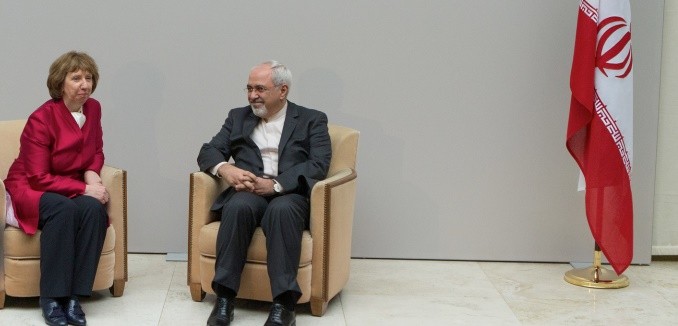In another indication that talks have yet to produce significant Iranian concessions, State Department Spokesperson Jen Psaki asserted Monday that the March 24 deadline to reach a political framework with Iran over its nuclear program was merely a “goal” and not a deadline. In November of last year, State Department Press Office Director Jeff Rathke explicitly called March 24 a “deadline for a political agreement.”
P5+1 red lines have been disappearing one by one as Iranian intransigence meets western desires for a diplomatic solution in a worrying trend. An editorial in The Washington Post last week stated that “a process that began with the goal of eliminating Iran’s potential to produce nuclear weapons has evolved into a plan to tolerate and temporarily restrict that capability.”
Although President Obama has stated that the international community must not “have the capacity to develop a nuclear weapon” and has called for “preventing Iran from acquiring nuclear capability,” now, the P5+1 are hoping to extend Iran’s breakout time to a year. In an exchange with Deputy Secretary of State Antony Blinken, Senator Robert Menendez (D – N.J.), asked, “[I]sn’t it true that even the deal that you are striving towards is not to eliminate any Iranian breakout capacity, but to constrain the time in which you’ll get the notice of such breakout capacity? Is that a fair statement, yes or no?” Blinken replied, “Yes it is.” However, many analysts have argued that one year is not enough time to discover an attempt to break out and coordinate a response.
At the start of the negotiations, the P5+1 demanded that Iran’s Arak heavy water reactor be transformed into a light water reactor, to eliminate a plutonium pathway to a nuclear weapon. A senior administration official stated, “We believe that Arak should not be a heavy water reactor as it is.” Additionally, in 2012, the U.S. and Europe insisted that Iran’s underground enrichment facility at Fordow be shut down. However, according to Ambassador Dennis Ross, during previous rounds of negotiations with Iran, the P5+1 dropped both of these demands, and have suggested that Fordow remain open as a “research facility.”
The Washington Post editorial board also observed, “Where it once aimed to eliminate Iran’s ability to enrich uranium, the administration now appears ready to accept an infrastructure of thousands of Iranian centrifuges.” At the start of negotiations, the United States sought to leave Iran with “no more than 1,500 centrifuges left operating…” Throughout the negotiation period, from November 2013 until the present day, the number of centrifuges the negotiating partners are reportedly prepared to accept has gradually increased to up to 6,500.




